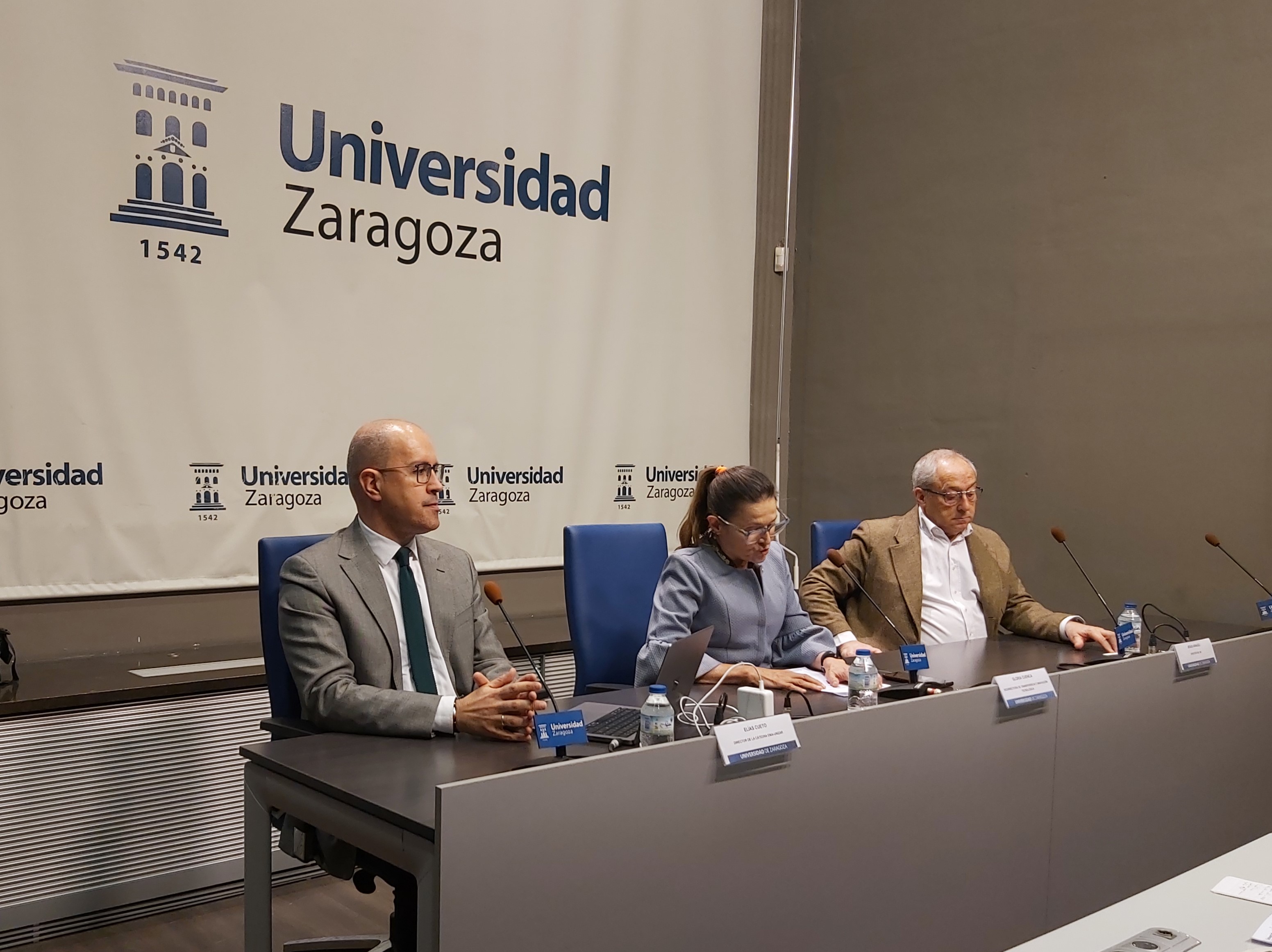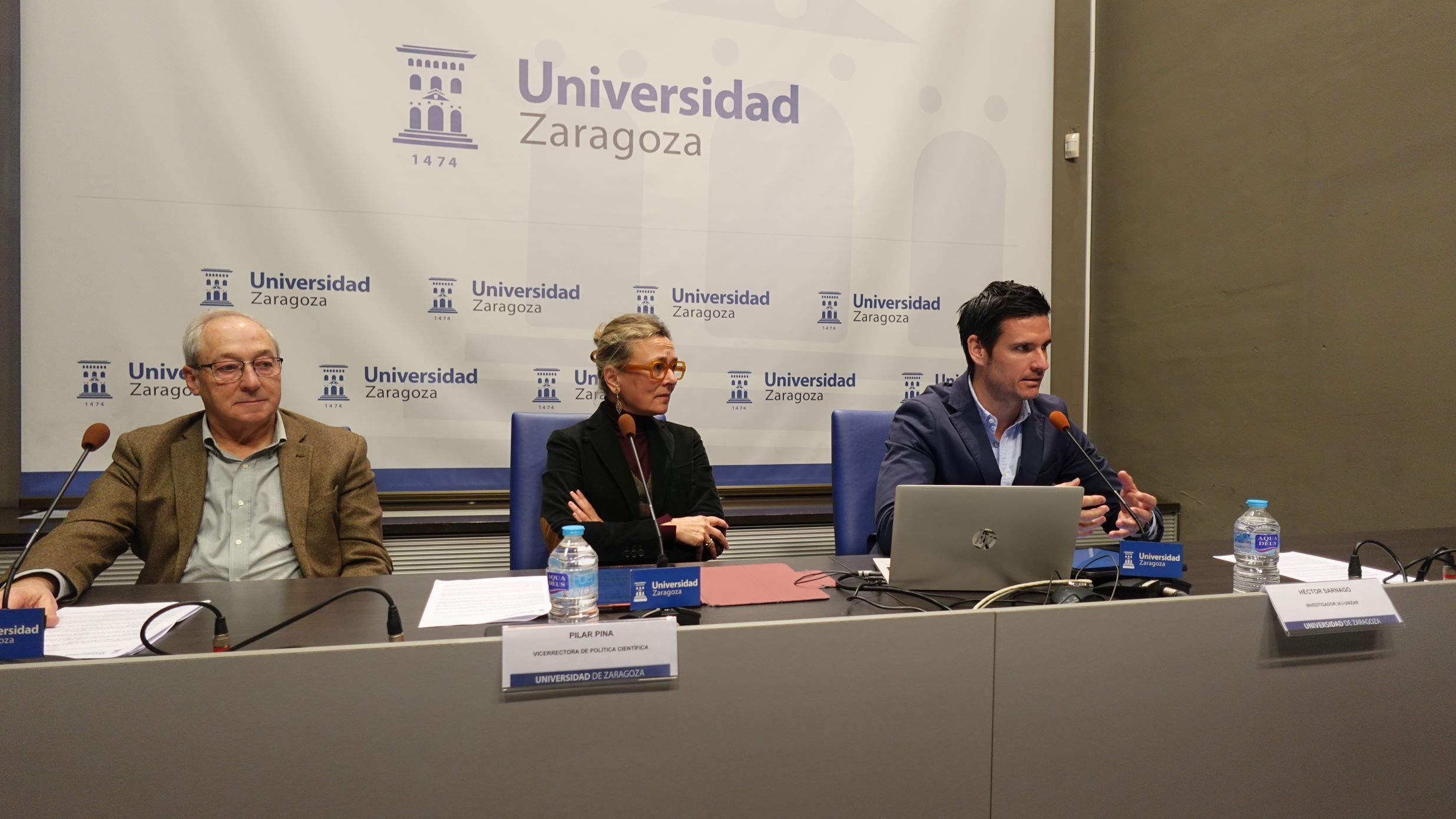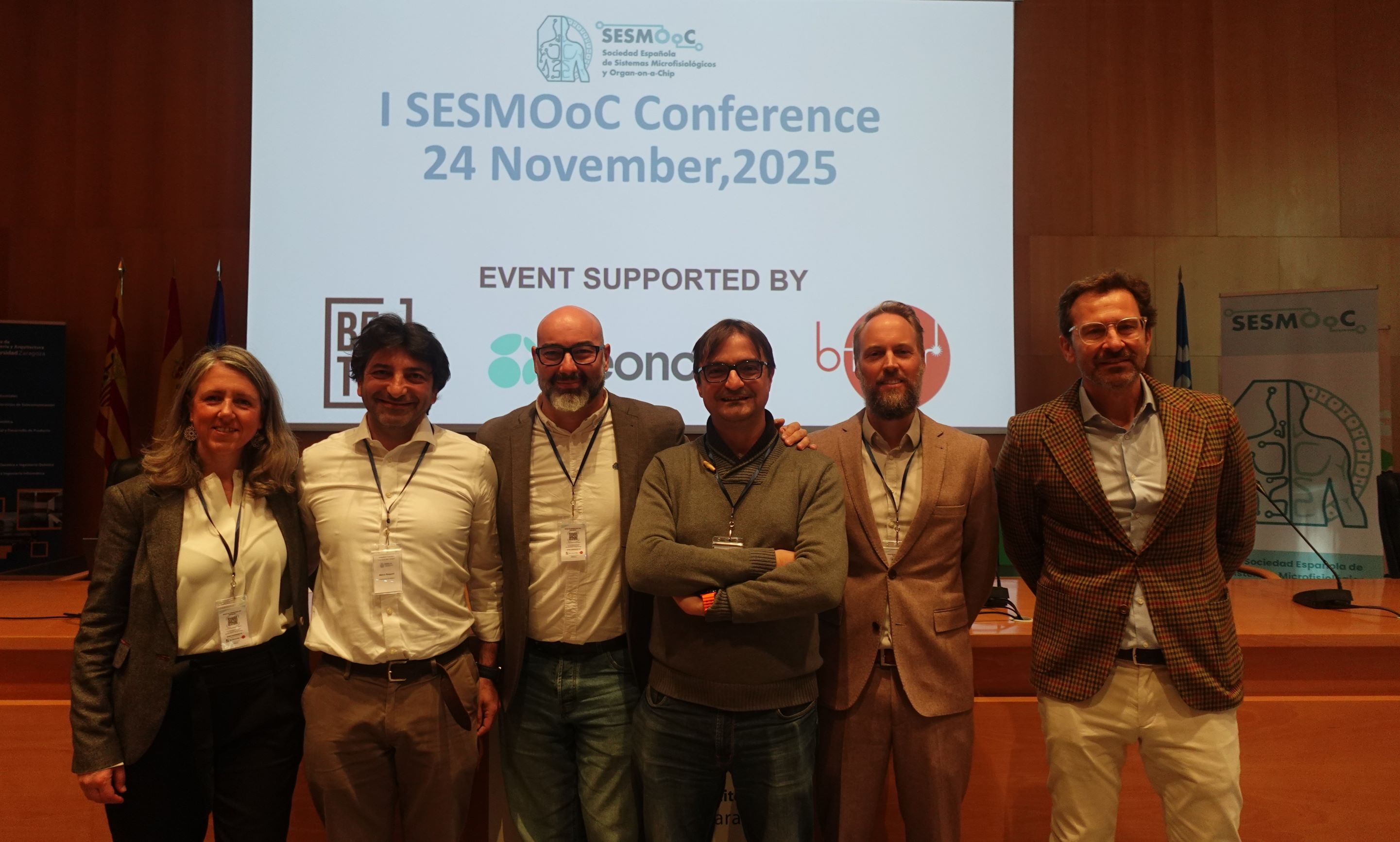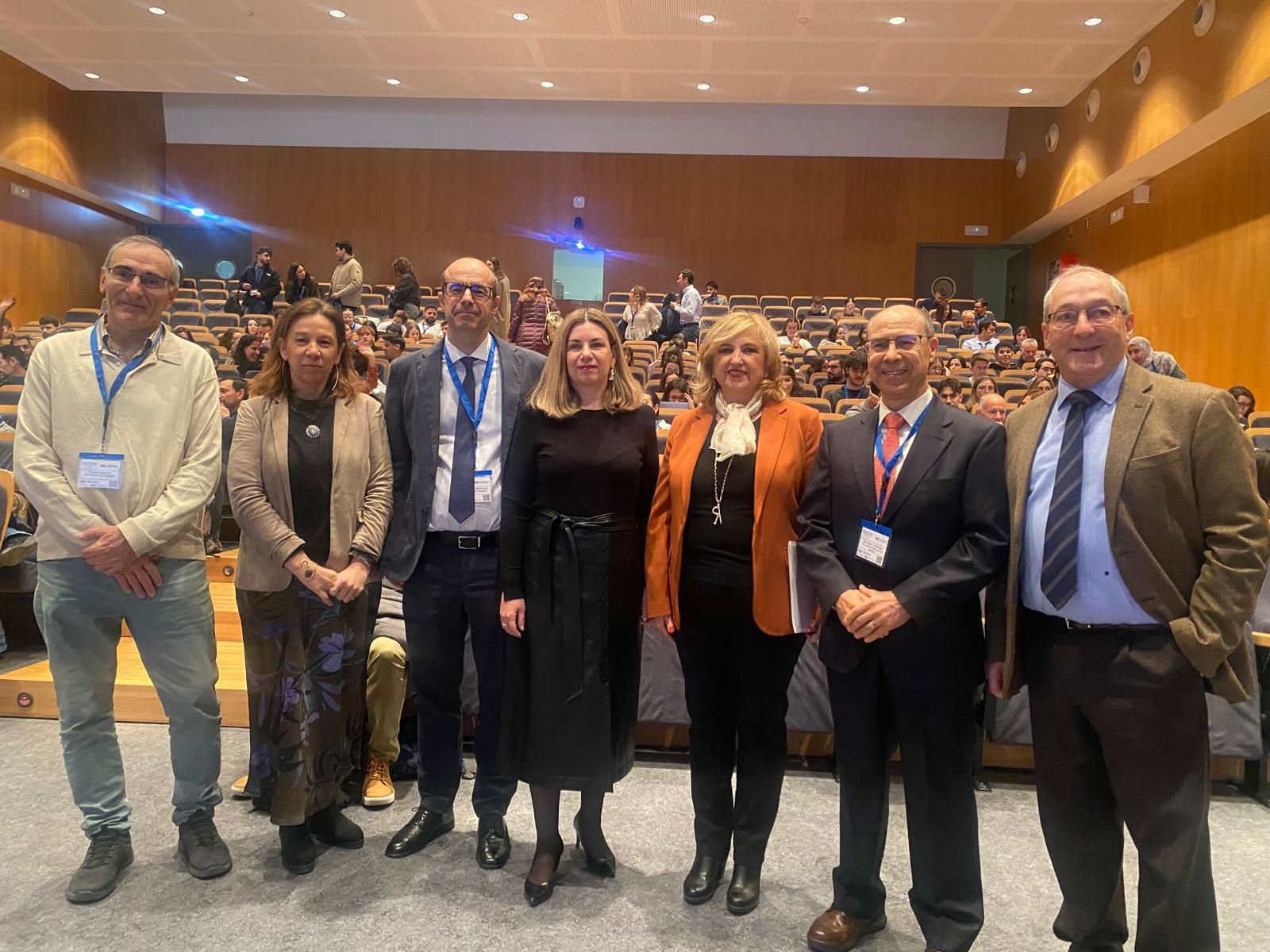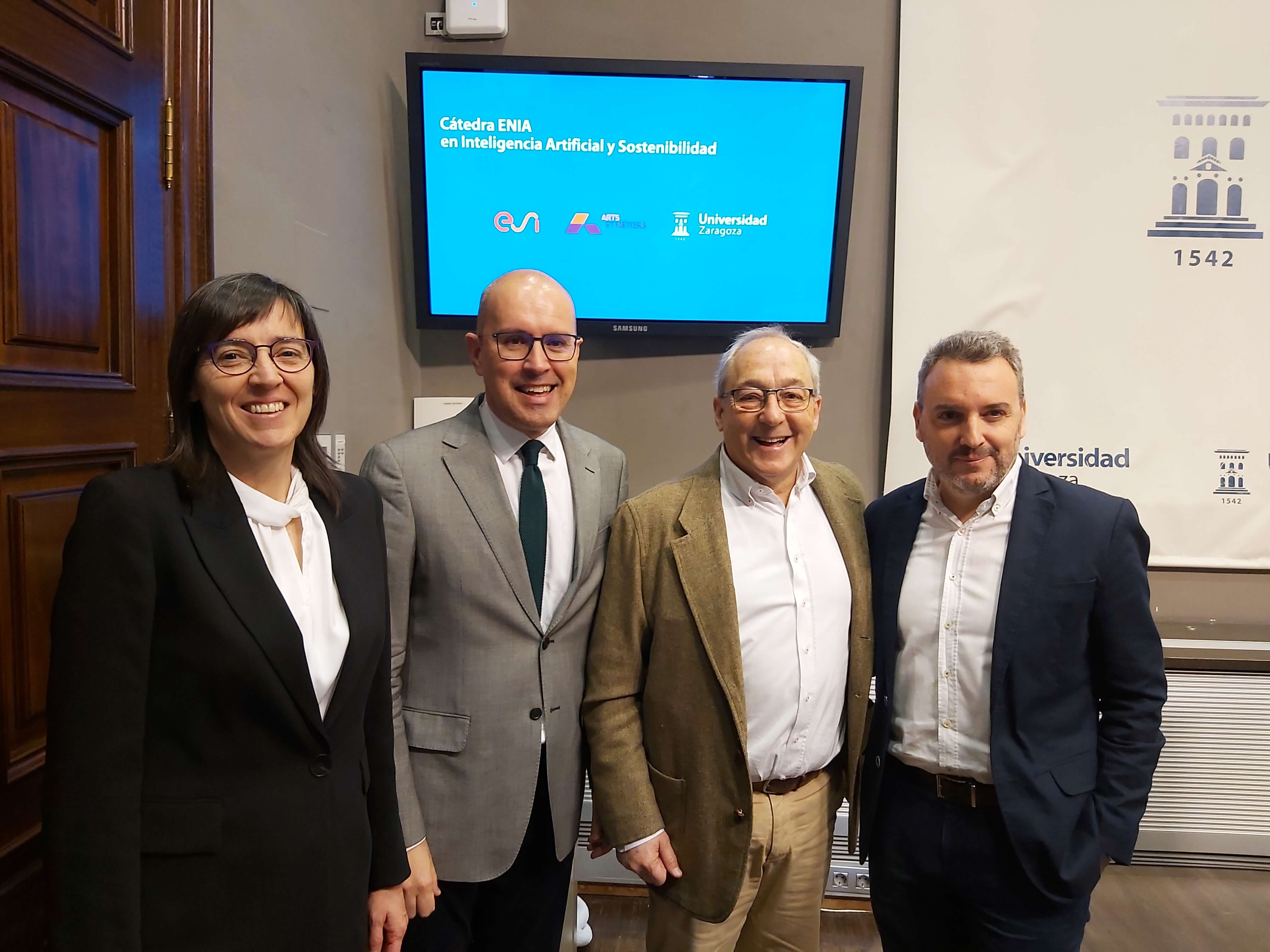
Researchers from the Aragon Institute for Engineering Research (I3A) at the University of Zaragoza will develop a project on Artificial Intelligence for sustainability, focusing on two areas with a significant weight in Spain, the automotive and construction industries. It will be within the framework of the ENIA Chair, granted to the University of Zaragoza by the Ministry for Digital Transformation and the Civil Service, which will receive 1.6 million euros, of which 1.2 million are from the public contribution and 400,000 come from the business side.
It is one of the seven international chairs that have been awarded in this call within the European Union's European Recovery, Transformation and Resilience Plan-Next Generation EU to fund university chairs dedicated to research, dissemination, teaching and innovation on Artificial Intelligence in order to develop the application of this technology in different areas of knowledge and promote research talent. In total, the Ministry has awarded 22 chairs, 15 of which are national in scope.
The ENIA Chair at the University of Zaragoza will run until December 2026. It will be coordinated by Elías Cueto Prendes, professor of Mechanical Engineering at the School of Engineering and Architecture and researcher of the AMB group of the I3A Unizar, together with Iciar Alfaro and David González. Both the University of Zaragoza and the multinational company ESI Group and the École Nationale Supérieure d'Arts et Métiers (ENSAM) in Paris, one of the major French engineering schools, are taking part.
Hybrid Artificial Intelligence in the automotive and construction industries
This chair will research the application of Artificial Intelligence (AI) to sustainability, articulated around two lines with a relevant weight in the economy in Spain, construction and automotive, always from the basis of sustainability, through technology.
"What we are going to develop is what is known as hybrid Artificial Intelligence, the union of AI with natural intelligence," explains Elías Cueto. To do this, they will incorporate all the scientific principles they already know, it will not be a research based on data and computation but on using the knowledge that already exists about the physical world, "we do not seek to replace the human component but to complement and expand it, creating an augmented intelligence", clarifies the coordinator of the ENIA Chair.
The techniques they develop will ensure sustainability, by requiring less data and fewer computing hours, and the reliability of their predictions, by complying with known laws of physics. "The advantage is that we will reduce the impact that AI has on the environment when it comes to large, energy-intensive data centres. We are not dealing with a black box whose behaviour we don't know, but with known physical laws, which reduces the probability of predictions that are not real," says Elías Cueto.
The crash of a car and an unsolved 17th century case
The track record of the AMB research group of the I3A Unizar to which the three researchers belong in computational simulation techniques, virtual and augmented reality and physics-informed Artificial Intelligence has been decisive in launching their proposal.
The company ESI Group, with which they work in different scientific lines, was the first to develop software capable of carrying out a virtual simulation of a car crash test in 1985, they solved it with a computer, and they are the first to manufacture a vehicle without any physical prototype, the entire development was virtual. "We are once again talking about sustainability, about minimising waste", Elías Cueto points out. They are also working on Smart Cities and large infrastructures, another of the sectors covered by the ENIA Chair, the application of Artificial Intelligence to the control, maintenance and design of large infrastructures and with predictive artificial intelligence.
One of the proposed theses is a problem that has been open since the 17th century. In those years, Robert Hooke found the perfect shape of an arch and managed to explain why semicircular arches were strong. The builders, without scientific training, knew that they needed sufficiently thick ashlars for the arches to be stable and so the size of the arch was passed on orally, the proportions of the ashlars so that they would not fall, was what experience dictated to them. But in the 17th century, Hooke found the perfect shape, the funicular arch, a more pointed arch than the semicircular arch, although it has never been possible to extrapolate this concept to the shape of a dome, there are only approximate solutions. "One of our jobs will be to take AI to solve this problem and see how to design laminar structures, among others, that have optimal material consumption, in terms of strength and sustainability," says Elías Cueto.
This has an influence on the design of structures with criteria of sustainability, strength, how to use a minimum amount of material without wasting anything. "We have to take into account that in concrete structures the energy and material consumption is enormous. We cannot continue to use concrete in the quantities in which it is used; between 50 and 75% of the weight of the concrete that is placed in a structure is not helping to support loads, but simply weighing down the rest of the structure", stresses the coordinator of the ENIA Chair. The aim of this work is to improve its use, in order to avoid weighing down the part that does work.
The research team defines their project as an "innovative, daring proposal, with the incorporation of physics into AI, not just data". They also highlight its contribution to the structuring of the territory, "it will play an important role because we have planned activities in Benasque, Jaca and Teruel with different training activities and scientific meeting points".
With the ENIA Chair project, six doctoral students and two post-docs will be incorporated. "It will allow us to advance in ongoing lines of research, receiving this economic amount opens the field to work, otherwise it would have taken us many years to reach these objectives," says Elías Cueto.
Professor Cueto's lines of research, within the Mecánica Aplicada y Bioingenierí Group (AMB) of the I3A Unizar have traditionally revolved around the development of computational simulation techniques for complex physical phenomena, and he has developed, together with the rest of his team, pioneering methods for simulation in fields such as virtual and augmented reality. More recently, they have oriented their lines of research towards the development of Physics-informed Artificial Intelligence techniques, where their group has excelled in the development of the first AI that is capable of making predictions that ensure the fulfilment of the principles of Thermodynamics.
More information about ENIA Chairs
- Proyect OTRI 2024/2005: “Cátedra ENIA en Inteligencia Artificial y Sostenibilidad: diseño, rendimiento en operación y mantenimiento predictivo” Cátedras ENIA 2022.
- The contract is part of proyect TSI-100930-2023-1, financiado por Secretaría de Estado de Digitalización e Inteligencia Artificial y por la Unión Europea-NextGenerationEU/PRTR.
- “Call conditioned to the publication of the final award of the project by the Secretary of State for Digitalisation and Artificial Intelligence of the Ministry for Digital Transformation and Public Administration and to the implementation dates and conditions that appear therein”.
